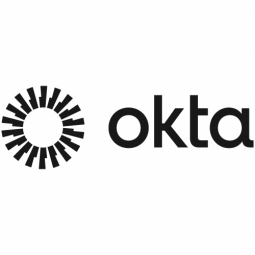Customer Company Size
Large Corporate
Region
- America
Country
- United States
Product
- Okta Identity Cloud
- Okta Single Sign-On (SSO)
- Okta Multi-Factor Authentication (MFA)
- Okta B2B Integration
- Okta User Management
Tech Stack
- Identity and Access Management (IAM)
- Cloud-based Services
- Zero Trust Strategy
Implementation Scale
- Enterprise-wide Deployment
Impact Metrics
- Customer Satisfaction
- Digital Expertise
- Productivity Improvements
Technology Category
- Cybersecurity & Privacy - Identity & Authentication Management
- Platform as a Service (PaaS) - Connectivity Platforms
Applicable Industries
- Cities & Municipalities
Applicable Functions
- Business Operation
- Facility Management
Services
- Cloud Planning, Design & Implementation Services
- System Integration
About The Customer
The City of Los Angeles, the largest city in California and the second-largest in the United States, serves a population of four million people across 469 square miles. The city's Information Technology Agency (ITA) is responsible for developing and maintaining IT infrastructure and applications that meet the needs of residents, businesses, and visitors. With 43 city departments, each with its own mission, the ITA provides centralized enterprise functionality to align departments and improve access to city services. The city administration includes a diverse constituency, with broad geographic, linguistic, and ethnic diversity, necessitating reliable and secure digital communication. The ITA has been working to modernize the city's digital experiences since the 2008 recession, with a renewed focus on identity management and security following the COVID-19 pandemic.
The Challenge
The City of Los Angeles faced challenges with its siloed legacy systems, which hindered the provision of secure and accessible digital services. The city's Information Technology Agency (ITA) aimed to modernize digital experiences, especially after the COVID-19 pandemic highlighted the need for efficient digital communication. The city needed a unified platform to connect its diverse departments and improve access to services for its four million residents. Security was a major concern, as the city is a target for cyber threats, and the existing systems provided varying levels of security and access. The ITA sought to create a framework that would allow the city to operate as a cohesive unit, providing a seamless and secure digital experience for constituents.
The Solution
The City of Los Angeles implemented the Angeleno Account, a central platform powered by the Okta Identity Cloud, to digitally connect city services and enhance security. The platform includes Okta Single Sign-On (SSO), Multi-Factor Authentication (MFA), B2B Integration, User Management, and Authentication. This solution allows the city to integrate application access and unify identities across different systems, moving away from legacy systems like LDAP. The Angeleno Account streamlines the business procurement process by integrating applications like the L.A. Business Assistant Virtual Network (LABAVN), providing a more user-friendly experience for city contractors. The platform's Zero Trust strategy ensures data integrity and security, making identities the perimeter rather than network systems. The ITA continues to expand the Angeleno Account to cover more city services, making it easier for departments to adopt SSO and MFA, and providing constituents with a one-stop-shop for city services.
Operational Impact
Quantitative Benefit

Case Study missing?
Start adding your own!
Register with your work email and create a new case study profile for your business.
Related Case Studies.

Case Study
Turning A Stadium Into A Smart Building
Honeywell created what it called the “intelligent system” for the National Stadium in Beijing, China, turning the venue for the opening and closing events at the 2008 Summer Olympics into a “smart building.” Designed by highly controversial artist Ai Weiwei, the “Bird’s Nest” remains one of the most impressive feats of stadium architecture in the world. The 250,000 square meter structure housed more than 100,000 athletes and spectators at a time. To accommodate such capacity, China turned to Honeywell’s EBI Integrated Building Management System to create an integrated “intelligent system” for improved building security, safety and energy efficiency.
.png)
Case Study
Smart Street Light Network (Copenhagen)
Key stakeholders are taking a comprehensive approach to rethinking smart city innovation. City leaders have collaborated through partnerships involving government, research institutions and solution providers. The Copenhagen Solutions Lab is one of the leading organizations at the forefront of this movement. By bringing together manufacturers with municipal buyers, the Copenhagen Solutions Lab has catalyzed the development and deployment of next-generation smart city innovations. Copenhagen is leveraging this unique approach to accelerate the implementation of smart city solutions. One of the primary focus areas is LED street lighting.

Case Study
Buoy Status Monitoring with LoRa
The Netherlands are well-known for their inland waterways, canals, sluices and of course port activities. The Dutch Ministry of Infrastructure indicates that there are thousands of buoys and fixed items in and near water environments that would profit from IoT monitoring. One of the problems with buoys for example, is that they get hit by ships and the anchor cable breaks. Without connectivity, it takes quite some time to find out that something has happened with that buoy. Not to mention the costs of renting a boat to go to the buoy to fix it. Another important issue, is that there is no real-time monitoring of the buoys at this moment. Only by physically visiting the object on the water, one gains insight in its status.

Case Study
Barcelona Case Study
Barcelona’s heavy traffic and its associated high levels of pollution were the primary factors that motivated some companies and universities to work on strategies for improving traffic in the city centre. Bitcarrier is one of the technologies involved in the In4Mo Project, whose main objective is to develop the applications that form the core of smart mobility, one of the fundamental pillars of the smart city concept.

Case Study
China Mobile Smart Parking
Smart Parking, powered by NB-IoT technology, is making it easier for drivers to find free parking spots. Cities can better manage their parking assets and maximize the revenue available to them as a result. Drivers searching for parking create congestion and pollution by circling and hunting for available parking. Smart Parking services are able to significantly ease these problems by guiding a driver directly to a parking space.








